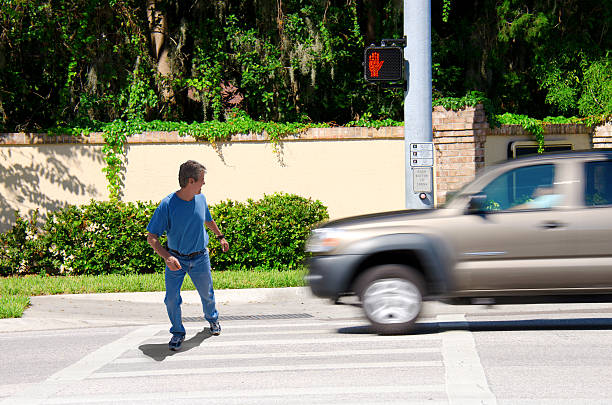Blog > 2017 > July > Who Is at Fault when A Jaywalker Gets Hit by A Vehicle?
Who Is at Fault when A Jaywalker Gets Hit by A Vehicle?
July 20, 2017
It is common for people to assume a motorist is at fault in an accident involving a pedestrian, and education courses for drivers often teach that pedestrians have the right of way on the road. This is not always the case, however, and pedestrians can be held partially or entirely accountable for accidents in some situations.
How is fault determined?
Let’s assume you witness an accident where a pedestrian runs out in front of a vehicle before a driver can react and avert an accident. In this case, assigning blame to the pedestrian will be accurate because there is little a driver can do when a pedestrian suddenly runs in front of traffic. In situations like this, your testimony can help an insurance adjuster come to a conclusion.
In a case where the driver is fully at fault, the pedestrian will recover damages from the motorist’s insurance policy.
On the other hand, if a pedestrian is at fault for an accident as in the above scenario, that person most likely won’t get any compensation for injuries and may even end up paying for damages the driver might have incurred whether to person or property. It doesn’t matter whether an individual is jaywalking, crossing during the wrong traffic signal, walking along a highway, or walking while you are drunk. That person will have to pay for compensation when it is proven beyond reasonable doubt that the individual is responsible.
What about shared fault?
Even in these situations, a motorist may still hold the blame at least partially for the accident. For example, a driver can be partly blamed for a jaywalking accident that driver was driving over the speed limit even if it’s just a few miles more, or if the driver was distracted (on the phone, eating carelessly or talking to someone else in the car). When both parties are at fault, courts tend to use two different legal concepts to make their decisions in personal injury claims. These concepts are contributory negligence or comparative negligence.
What is comparative and what is contributory negligence?
Comparative negligence is used by many states including California to determine the level of fault in personal injury cases. While a few use contributory negligence to handle personal injury claims. Contributory negligence is an all or nothing system that states that the party to blame must carry 100% settlement for the injured party. Although this system reduces the number of personal injury cases that come to the court, the ruling is rarely fair.
In comparative negligence, however, the injured party carries some of the faults for the accident and will collect a reduced settlement that reflects the level of responsibility they hold. A good example is if a driver was texting when a jaywalker stepped out in front of the car and an accident occurs. In a bid to get compensated, the pedestrian sues the motorist for damages, and a jury decides that the driver bears 60% fault for the accident, while the pedestrian bears 40%. The pedestrian will receive a settlement for damages minus his or her proportion of the blame.
